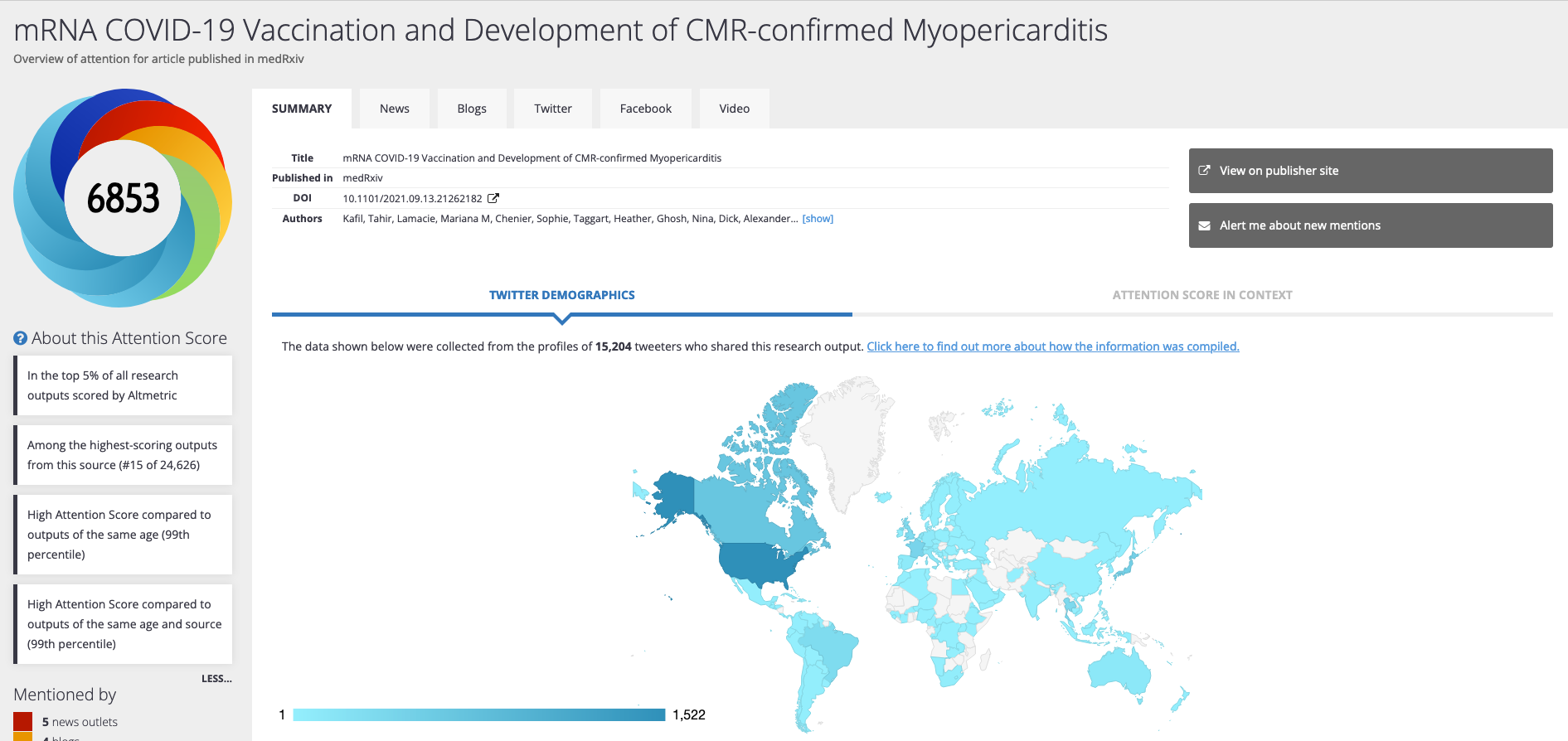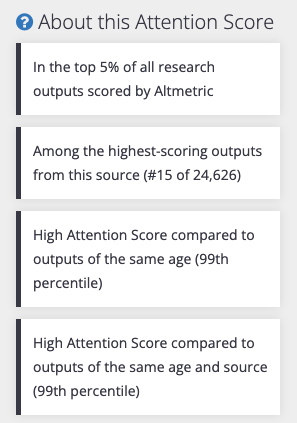Another Preprint Bomb Detonates
Unvetted materials containing major errors provide fodder for conspiracists
A big lesson that techno-utopians seem to have missed is that the information landscape they’ve created is unstable and radioactive, based on attention rather than knowledge. Drop an extra neutron into it, and you can set off a worldwide explosion of misinformation.
This happened last week in Canada, where physicians at the Ottawa Heart Institute posted a preprint on medRxiv in which they estimated the incidence of myocarditis after mRNA vaccination for Covid-19 occurred at a rate of approximately 1 in 1,000.
Sadly, despite the data being publicly available and the math simple, these “smart” people made a dumb calculation mistake — there were ~25x more vaccines administered than they accounted for, making the risk 1 in 25,000, or lower than the risk of myocarditis from Covid-19 itself.
This error has been seized upon by those peddling vaccine misinformation, with parents of children currently or soon eligible for the vaccine a particular target. A new source of vaccine denialism just detonated.
The authors hemmed and hawed about the mistake, finally calling it a “major miscalculation,” with Peter Liu, MD, scientific director of the Ottawa Heart Institute and a co-author of the study, saying:
We were doing this on the run, in a way, and we were getting kind of the preliminary vaccination rate data, and so it turns out that that number was not complete.
“On the run” and “preliminary” and “not complete” — these are the things we need to entrust to expert intermediaries who are privileged with the role of slowing things down so information that reaches the public isn’t preliminary and incomplete. After all, we are living in an explosive information environment, and articles about Covid vaccines are fissile materials.
One small preprint injected into an unstable information ecosystem.
What could possibly go wrong?

The authors of the preprint don’t seem to fully comprehend what they’ve likely unleashed, or how preprints work. Andrew Crean, MD, co-director of the cardiac MRI service at the Ottawa Heart Institute and the study’s lead author, seems to think that people online pointing out their egregious error were “peer reviewers.” They were not. The preprint has not undergone peer review to this day, and was withdrawn because the error was so obvious that anyone with a skeptical eye and a little bit of Google could flag the problem.
While the preprint was “withdrawn” relatively quickly, the shockwaves from its detonation are only beginning, just as those with the “withdrawn” ivermectin preprint from early this summer are only now beginning to subside — after an unknown amount of sickness and death.
Preprint servers don’t really “withdraw” their preprints, but label a version as withdrawn while the full text remains available and crawled versions elsewhere thrive. Unable or unwilling to create the proper norms around temporary draft papers — not using permanent identifiers, taking preprints down when a peer-reviewed version appears or one seems highly unlikely, and putting these potentially explosive claims behind a safety curtain — preprint server managers hew to the norms around peer-reviewed manuscripts, to everyone’s detriment. “Withdrawn,” my Aunt Fanny.
Since preprints remain freely available to fuel engines of outrage and confusion, radioactive Covid vaccine preprints (today — who knows what’s next?) get scraped and reposted in myriad places pushing anti-vax (in this case) or wild-eyed treatment conspiracies (in the case of ivermectin), places which don’t hew at all to scholarly publishing norms, and in fact actively flout them.
As Adam Miller at the CBC reports:
Despite not getting any mainstream media coverage in Canada or anywhere else at the time it was published, the study quickly spread around the world on social media and anti-vaccination websites, where it was incorrectly claimed as evidence of the damage COVID-19 vaccines cause. . . .
Timothy Caulfield, Canada Research Chair in health law and policy at the University of Alberta who has studied the challenges with preprints in the pandemic, says the way in which the erroneous study has been shared widely online to promote an anti-vaccination agenda is “incredibly frustrating.”
“First of all, the topic is so sensitive with parents, with young adults. When people are doing this risk-benefit calculus and they see a study like this, even if it just crosses their radar on social media, it can have an impact on their intentions,” he said.
“So a mistake like this can do real, serious harm — and I think it probably already has, unfortunately.”
Last week, Paul Keckley noted five flaws in the US pandemic response, the first three of which are relevant to this discussion:
- Covid-19 science has been compromised by political self-interests
- The influence of social media has been underestimated
- The scientific community has confused the public
- Policymakers have misplaced responsibility for vaccinations on employers
- The pandemic has widened the gap between private insurers and hospitals and nursing homes
Place on top of this the role of Google and Facebook in 20 years of vaccine confusion and denialism, and boom.
As of last night, the preprint had been shared more than 18,000 times on Twitter, according to Altmetric, placing it in the top 5% of all research Altmetric has tracked.


The study also showed up on anti-vaccination websites, misrepresented as evidence that the rate of myocarditis had been intentionally underestimated and that thousands of children could be at risk of heart failure after vaccination in the future.
As we watch parents grapple with misinformation streaming from this preprint, we’re going to see a greater reluctance to have children vaccinated. As the techno-utopians equivocate, let’s remember their culpability — in our own self-serving haste, we’ve allowed our public interface to become so degraded that we’re routinely pumping bad information out, with little to no accountability, and minimizing the effects. We are letting radiation leak out of our little nuclear furnaces all the time now.
Information has become radioactive. The onus is now greater on those charged with handling it. We need to design and deploy systems, processes, and norms accordingly. The long-term effects could be even worse.